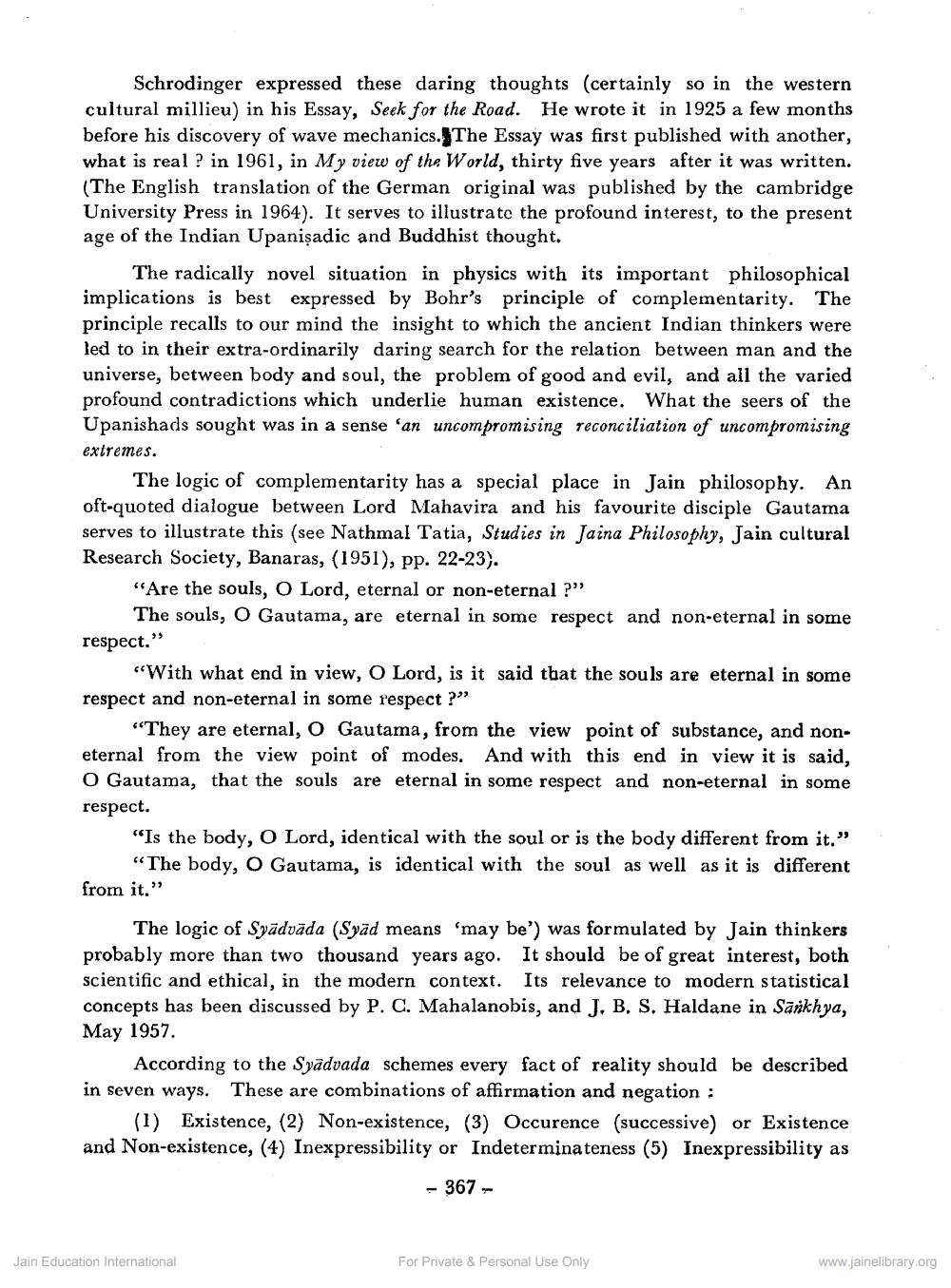Book Title: Reality and Physics Some Aspects Author(s): D S Kothari Publisher: Z_Kailashchandra_Shastri_Abhinandan_Granth_012048.pdf View full book textPage 3
________________ Schrodinger expressed these daring thoughts (certainly so in the western cultural millieu) in his Essay, Seek for the Road. He wrote it in 1925 a few months before his discovery of wave mechanics. The Essay was first published with another, what is real? in 1961, in My view of the World, thirty five years after it was written. (The English translation of the German original was published by the cambridge University Press in 1964). It serves to illustrate the profound interest, to the present age of the Indian Upanisadic and Buddhist thought. The radically novel situation in physics with its important philosophical implications is best expressed by Bohr's principle of complementarity. The principle recalls to our mind the insight to which the ancient Indian thinkers were led to in their extra-ordinarily daring search for the relation between man and the universe, between body and soul, the problem of good and evil, and all the varied profound contradictions which underlie human existence. What the seers of the Upanishads sought was in a sense 'an uncompromising reconciliation of uncompromising extremes. The logic of complementarity has a special place in Jain philosophy. An oft-quoted dialogue between Lord Mahavira and his favourite disciple Gautama. serves to illustrate this (see Nathmal Tatia, Studies in Jaina Philosophy, Jain cultural Research Society, Banaras, (1951), pp. 22-23). "Are the souls, O Lord, eternal or non-eternal ?" The souls, O Gautama, are eternal in some respect and non-eternal in some respect." "With what end in view, O Lord, is it said that the souls are eternal in some respect and non-eternal in some respect ?" "They are eternal, O Gautama, from the view point of substance, and noneternal from the view point of modes. And with this end in view it is said, O Gautama, that the souls are eternal in some respect and non-eternal in some respect. "Is the body, O Lord, identical with the soul or is the body different from it." "The body, O Gautama, is identical with the soul as well as it is different from it." The logic of Syadvāda (Syād means 'may be') was formulated by Jain thinkers probably more than two thousand years ago. It should be of great interest, both scientific and ethical, in the modern context. Its relevance to modern statistical concepts has been discussed by P. C. Mahalanobis, and J. B. S. Haldane in Sankhya, May 1957. According to the Syadvada schemes every fact of reality should be described in seven ways. These are combinations of affirmation and negation: (1) Existence, (2) Non-existence, (3) Occurence (successive) or Existence and Non-existence, (4) Inexpressibility or Indeterminateness (5) Inexpressibility as - 367 Jain Education International For Private & Personal Use Only www.jainelibrary.orgPage Navigation
1 2 3 4 5 6 7 8 9 10
